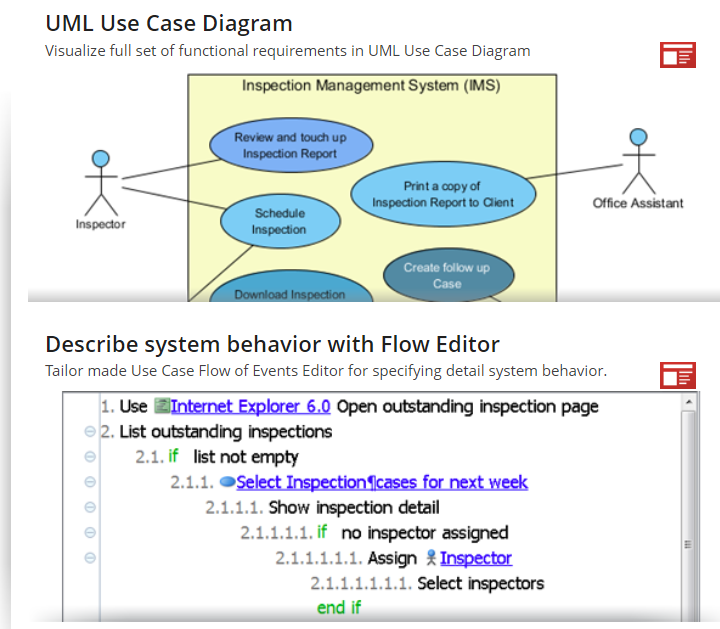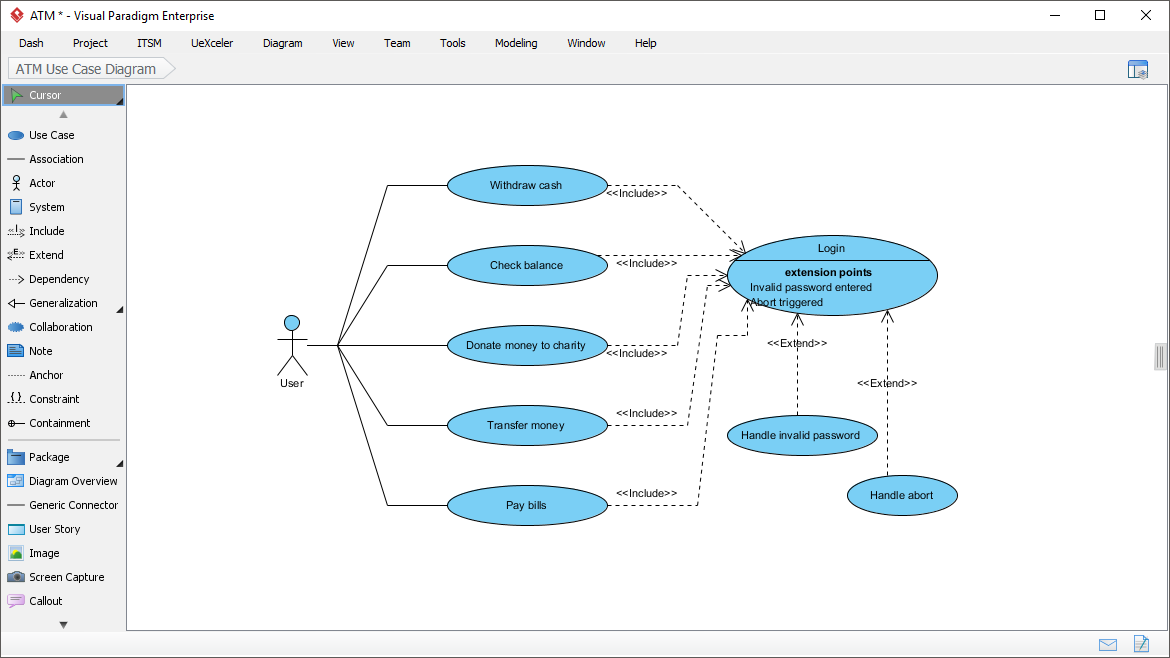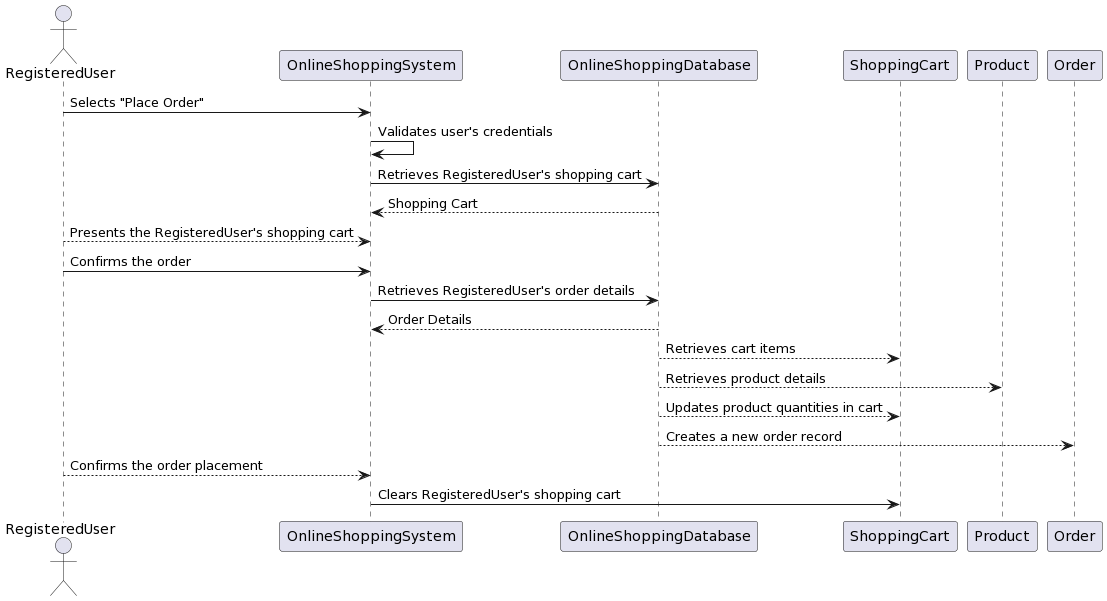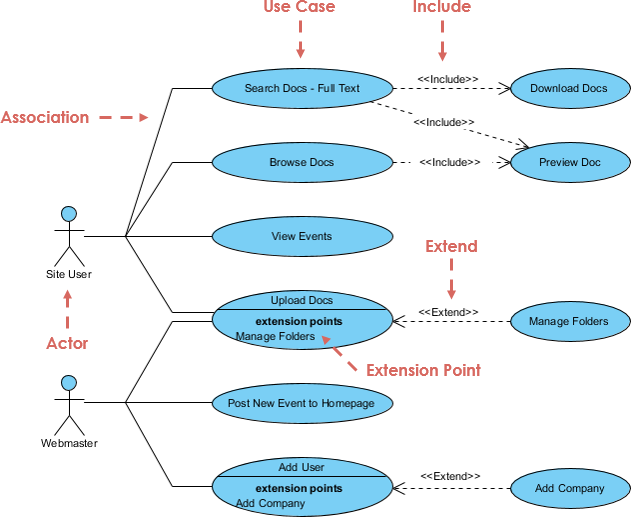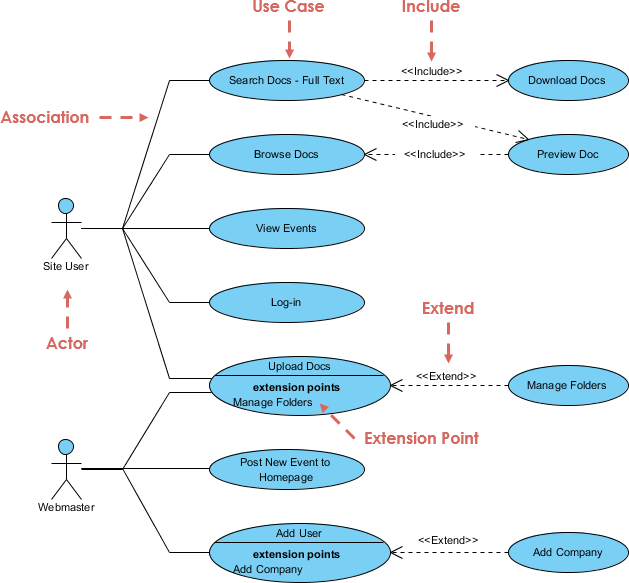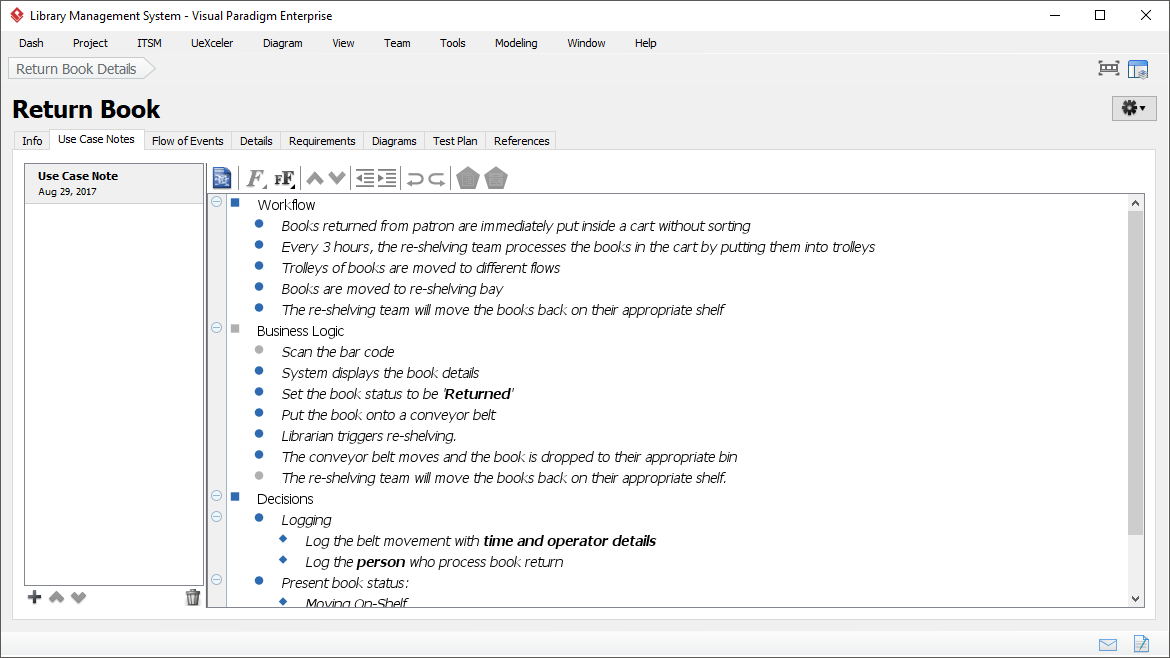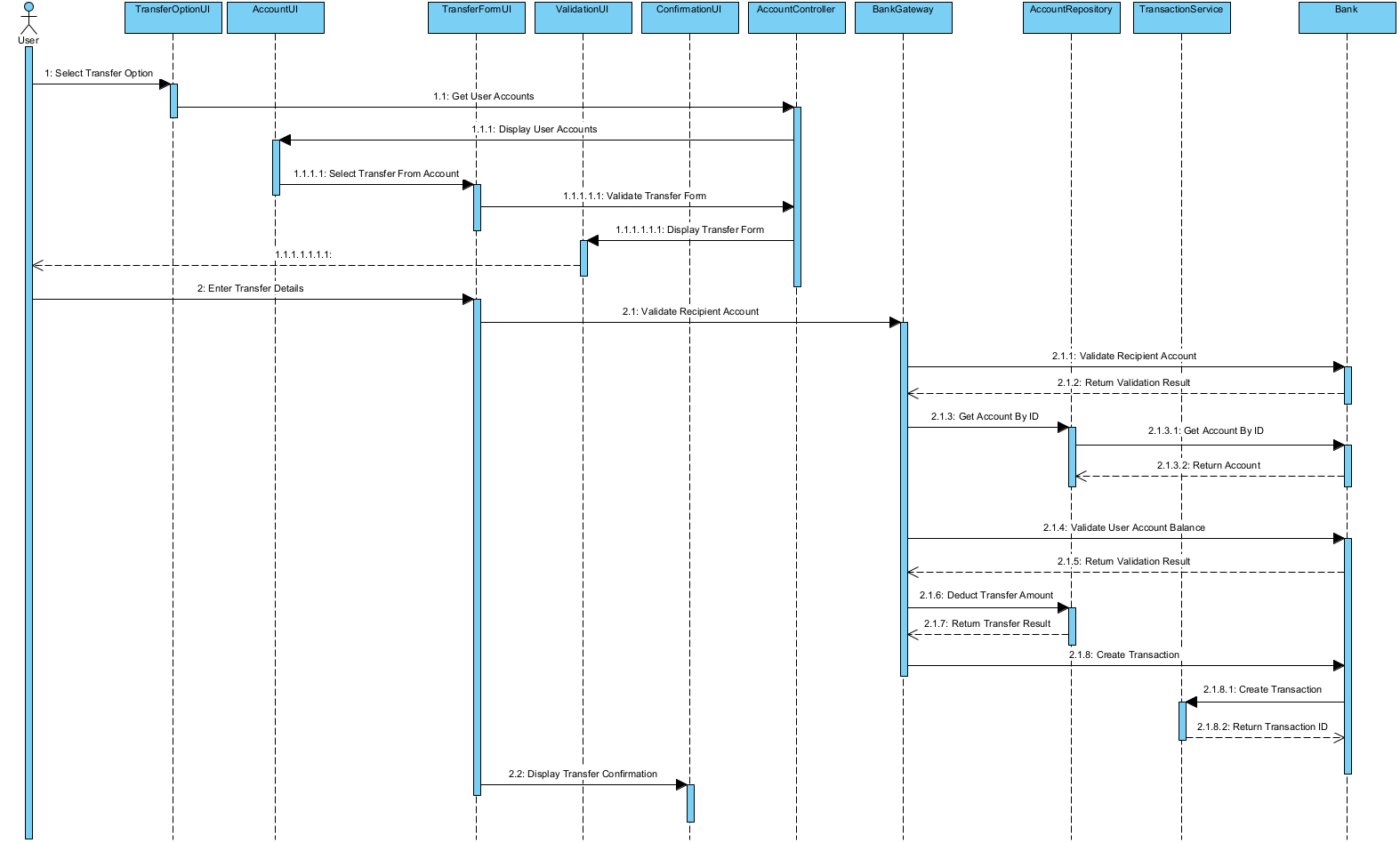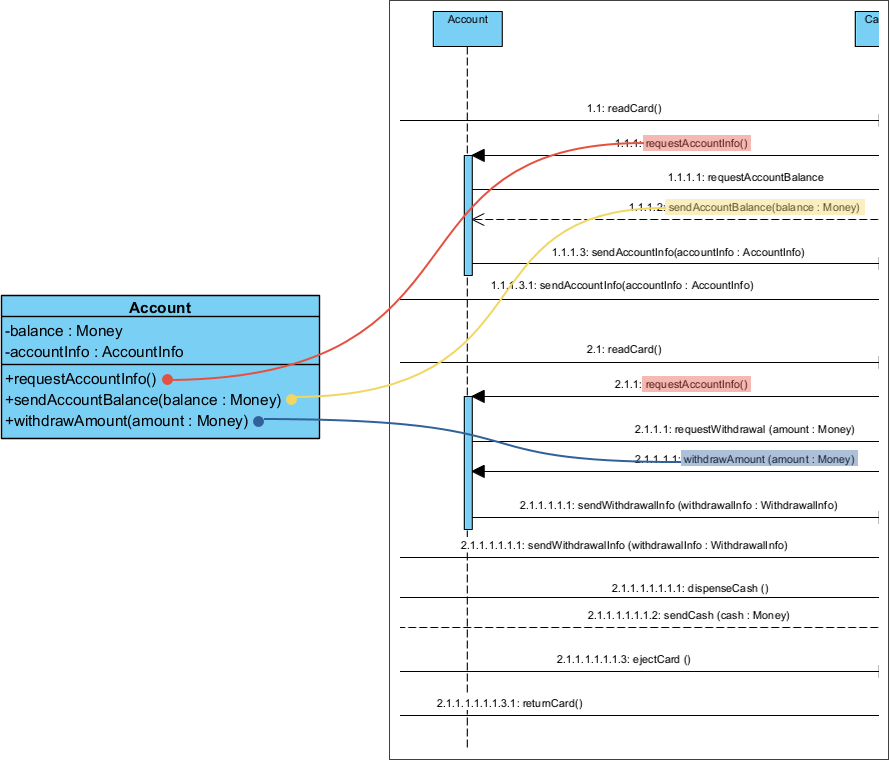Home » Use Case Analysis » Page 2
Are you tired of the time-consuming and error-prone process of gathering functional requirements for your software projects? Do you wish there was a more efficient way to capture and visualize your project's needs? Look no further! Visual Paradigm is here to revolutionize your requirements capture process and supercharge your system analysis efforts Capture Right Requirements at Once When it comes to software development, getting the requirements right is paramount. Any misunderstandings or omissions can lead to costly delays and project complications down the road. Visual Paradigm understands the importance of capturing the right…
continue reading →
In the fast-paced world of software development, there's one critical factor that can make or break your project: requirements specification. Inadequate and unclear requirements often lead to project failures, costing time, money, and valuable resources. But fear not, because Visual Paradigm is here to revolutionize the way you approach requirements and software development. Understanding the Power of Use Cases Enter the world of use cases – a reliable and user-friendly technique that bridges the gap between developers and end-users. Use cases are like the universal language of software development. They enable end-users (or…
continue reading →
Introduction In the realm of software development and systems analysis, understanding the interactions between different components of a system is paramount. Use cases and Entity-Relationship Diagrams (ERDs) are two essential tools that help developers and stakeholders gain a comprehensive view of a system's functionality and its underlying data structure. In this article, we will explore the benefits of elaborating a use case with an ERD and provide an example to illustrate this approach. Understanding Use Cases Use cases are a fundamental aspect of requirements analysis and are commonly used in software engineering to…
continue reading →
Introduction: In the realm of system design and software development, creating a comprehensive blueprint is essential to ensure the seamless functionality of complex applications. Use cases, pivotal in this process, serve as building blocks that define user-system interactions. However, understanding not only what use cases are but also how they interconnect is equally critical. This article delves into the intricate relationships that weave the fabric of use cases, shedding light on their purpose, types, and practical implications. The Relationship Types of Use Cases Use cases, in the context of Unified Modeling Language (UML),…
continue reading →
Introduction Use Case and User Story are two different techniques used in Agile software development to capture and communicate requirements, and they serve slightly different purposes. Whether one is better than the other depends on the specific needs and preferences of the Agile team and the project context. Let's explore the differences and use cases for each: Use Case: Purpose: Use cases are typically used to describe the functional requirements of a system from the perspective of an external actor (usually a user or another system). Format: They are often represented as structured…
continue reading →
Introduction Agile development methodologies have revolutionized the software development landscape by emphasizing collaboration, adaptability, and iterative development. While Agile practices like Scrum and Kanban have gained widespread adoption, it's crucial not to overlook the importance of effective requirements management in Agile projects. Use case modeling serves as a valuable bridge between customer needs and software implementation in Agile development. In this article, we will explore how to effectively apply use case modeling in Agile projects to enhance communication, streamline development, and deliver high-quality software. The Role of Use Case Modeling in Agile Use…
continue reading →
What is Use Case Modeling? This is a technique used in software development and systems engineering to describe the functional requirements of a system. It focuses on understanding and documenting how a system is supposed to work from the perspective of the end users. In essence, it helps answer the question: "What should the system do to meet the needs and goals of its users?" Key Concepts of Use Case Modeling Functional Requirements: Functional requirements are the features, actions, and behaviors a system must have to fulfill its intended purpose. Use case modeling…
continue reading →
The use case driven approach is a methodology that focuses on defining system requirements and features from the perspective of its users. It is a user-centered approach that emphasizes the identification of user needs, goals, and behaviors in order to ensure that the system being developed will meet their expectations. In this approach, use cases are used to describe the behavior of the system in response to user interactions. Use cases are scenarios that describe how the system is used in different situations. Benefits The use case driven approach offers a number of…
continue reading →
What is a Sequence Diagram Software development requires an efficient communication and understanding between all stakeholders involved in the project. One of the essential tools for effective communication and understanding is the sequence diagram. A sequence diagram is a graphical representation of the interactions between different components of a system over time. To create a sequence diagram that accurately depicts the interactions within a system, it is crucial to follow a well-defined process. They are commonly used in software development to depict the flow of messages between objects and the order in which…
continue reading →
Benefits of Iterative and Incremental Development in OOAD Iterative and incremental are two concepts that are widely used in Object-Oriented Analysis and Design (OOAD). These concepts are used to describe the development process of a software system. Iterative development is a process in which the software is developed in small increments. Each increment adds some functionality to the software, and the software is tested after each increment. The feedback from the testing is used to refine the requirements and design of the system. The process is repeated until the software meets the desired…
continue reading →

